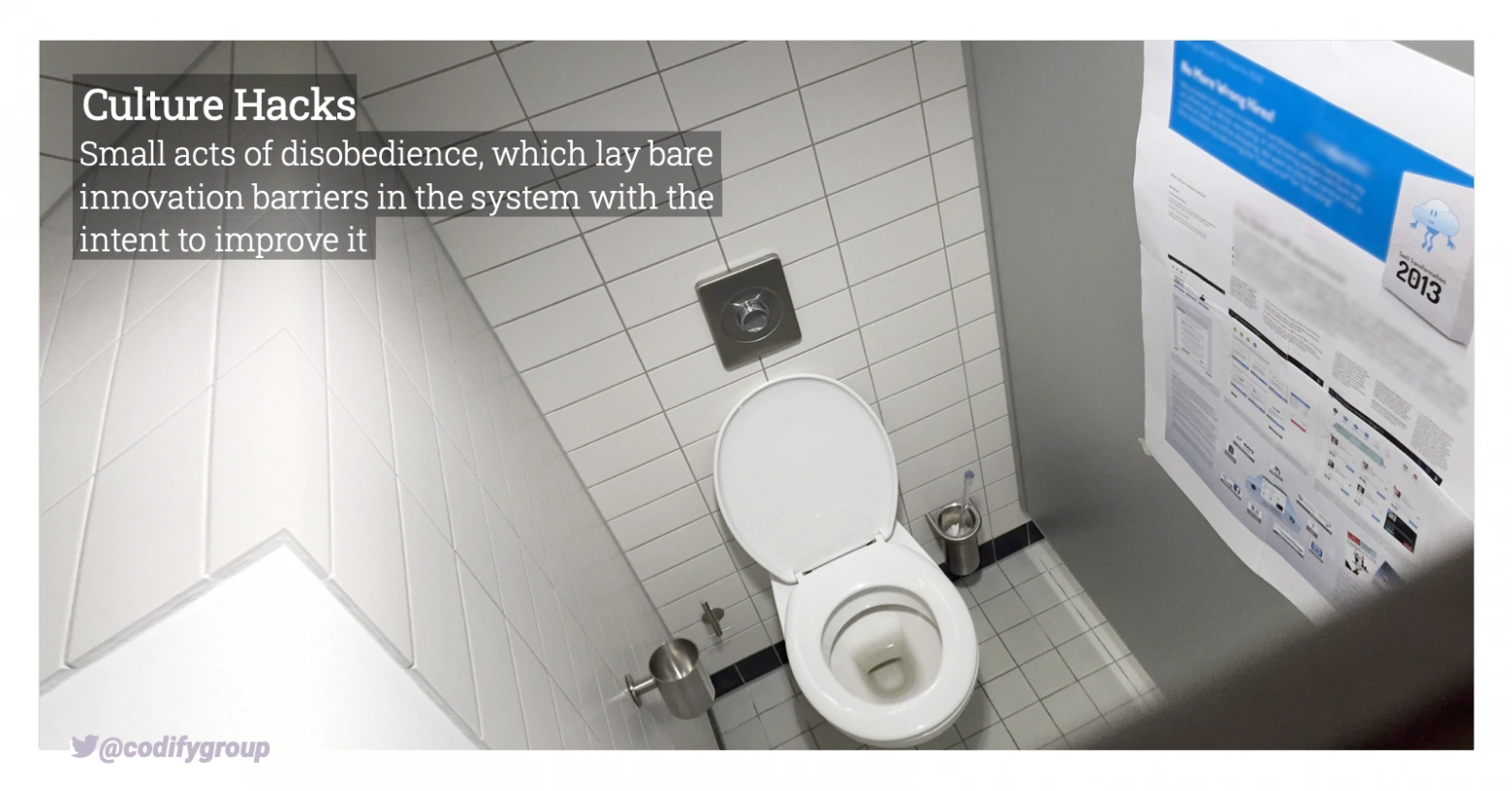A hack can be defined from different perspectives. It can be a clever solution to a tricky problem; a creative practical joke; reading code rules differently than others do; or modifying or changing something in an extraordinary way. Hacks in the context of organizational culture are small acts of civil disobedience by corporate innovators who can’t move their projects forward because the organization has not set up a supportive innovation system. In these small, subversive acts product teams, change agents, or other innovators willfully violate or circumvent protocol and rules to either lay bare the absurdity of the system they have to operate in, or simply to get their job done in spite of it.
This behavior is not meant to disrespect adversaries, superiors, or critics – even though it is of course a form of powerplay (often from a position of weakness). By hacking their culture, these innovators rather show an ‘alternative way’ of how things could or need to be done. They highlight where the system is currently broken and the necessity of process or management innovation.
Wise leadership uses culture hacking observations in the same way user research does with customers: to provide feedback that the (innovator’s) experience was disrupted/confusing/etc. and the users (of the innovation system) had to muddle through to get their jobs done. So instead of fighting innovators’ deviant behavior, leadership should rather embrace culture hackers as what they are: people who care and who want to improve their organization’s innovation culture.
Two final notes: First, let’s face it, hacks are often the last resort to get something done. Most of the time they come from a position of powerlessness (even though it takes place in management from time to time). Culture hackers, therefore, expose themselves, put their jobs at risk, and may even face legal action if management misinterprets what they’ve done. If we were to choose between top-down (intentional innovation capability building) and bottom-up (hacking) cultural change, we would always say: not either, but both, in an organized way. Top-down change does not work, hundreds of studies have shown that. But bottom-up change alone is always the least favorable option. It burns out innovators and can poison culture if management unwisely chooses to punish the intrapreneurs who tried to ask for forgiveness rather than permission. This is why culture hacking and the examples here are surely not for the faint-hearted.
And final note two: Culture hacks should be differentiated from so-called work hacks (e.g. open Fridays, daily standups, revised meeting structures). These are rather productivity improvements and not risky at all. For some organizations they might feel radical, hence the cool word ‘hack’, but in comparison to culture hacks they aren’t.

